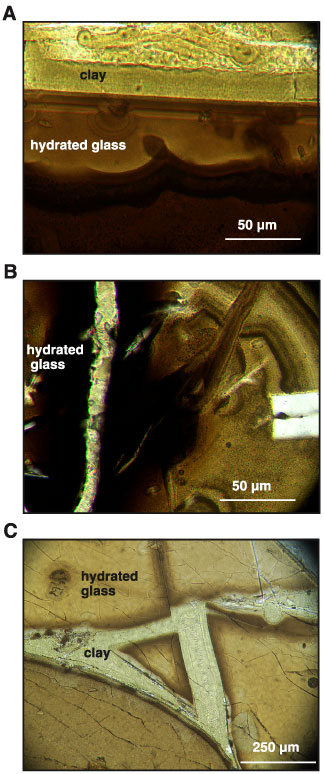Figure F88. Photomicrographs of glass alteration fronts in three samples from Hole 801C showing the absence of microbial alteration. A. Sample 185-801C-16R-5, 107-110 cm. A sharp boundary between brown hydrated glass and greenish yellow clay runs across the top of the photograph. Smooth chemical boundaries within the glass and clay are indicated by color changes. This smooth zoning suggests pure chemical alteration, as microbes would produce localized zones of alteration. B. Sample 185-801C-17R-1, 35-38 cm. Two veins cut the glass. The white vein is filled with calcite and the brown vein cuts concentric bands of dark and light alteration. The dark alteration around the calcite vein appears to be homogeneous replacement of glass. The hydrated glass does not appear to have localized zones of alteration that could be attributed to microbes. C. Sample 185-801C-32R-1, 67-69 cm. Clay-filled fractures in hydrated glass. The glass around the fractures is darkened but there are no microbial alteration textures. Boundaries between clay and glass are smooth.

![]()